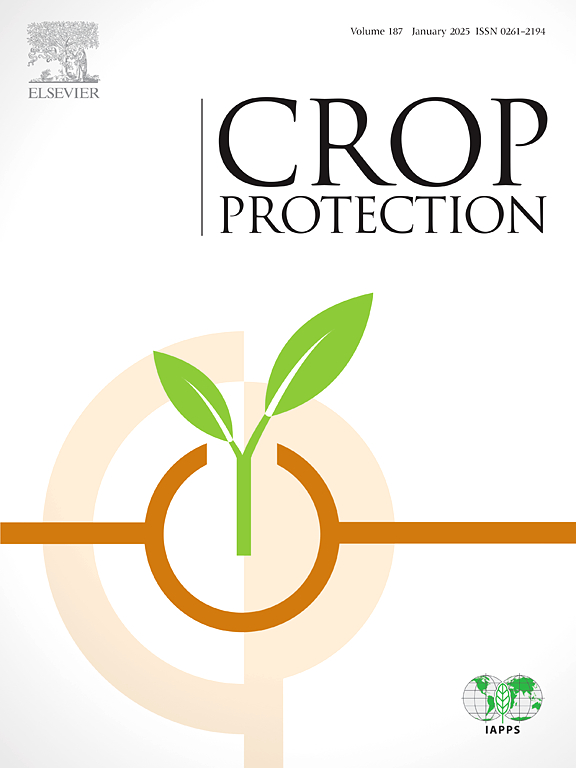Characterization of Pantoea agglomerans associated with shot hole, canker and gummosis in peaches and plums from the Northwestern Himalayan region of India
IF 2.5
2区 农林科学
Q1 AGRONOMY
引用次数: 0
Abstract
Peaches and Plums are one of the most important stone fruit crops in the world and equally consequential in India. Surveys were carried out in peach and plum orchards during the years 2022 and 2023. Infected orchards of peach and plum trees showed an incidence of shot holes, cankers, and gummosis ranging from 51.25% to 88.95%. Typical symptoms included small yellow spots on the leaves that eventually turned purplish-brown and necrotic, leading to shot holes, as well as cankers and gummy exudates on the twigs. The associated bacterium was isolated that produced yellow, flat colonies with smooth margins on nutrient agar. Morphological and biochemical tests confirmed that the bacterium was Gram-negative and belonged to the Enterobacteriaceae family. After the screening of bacterial isolates by standard cultural and biochemical tests, the isolates were molecularly characterized by PCR amplification and sequencing of partial 16S rRNA, gyrB, and leuS. Pathogenicity tests by twig method and in vivo bacterial injection method, produced similar symptoms as observed in the field. Based on morphological, biochemical, molecular and pathogenicity studies the causal organism was identified as Pantoea agglomerans. To the best of our knowledge, this is the first report of P. agglomerans causing shot hole, canker, and gummosis on stone fruits in India. These findings will help in formulating effective management strategies against new emerging pathogens of stone fruits.
求助全文
约1分钟内获得全文
求助全文
来源期刊

Crop Protection
农林科学-农艺学
CiteScore
6.10
自引率
3.60%
发文量
200
审稿时长
29 days
期刊介绍:
The Editors of Crop Protection especially welcome papers describing an interdisciplinary approach showing how different control strategies can be integrated into practical pest management programs, covering high and low input agricultural systems worldwide. Crop Protection particularly emphasizes the practical aspects of control in the field and for protected crops, and includes work which may lead in the near future to more effective control. The journal does not duplicate the many existing excellent biological science journals, which deal mainly with the more fundamental aspects of plant pathology, applied zoology and weed science. Crop Protection covers all practical aspects of pest, disease and weed control, including the following topics:
-Abiotic damage-
Agronomic control methods-
Assessment of pest and disease damage-
Molecular methods for the detection and assessment of pests and diseases-
Biological control-
Biorational pesticides-
Control of animal pests of world crops-
Control of diseases of crop plants caused by microorganisms-
Control of weeds and integrated management-
Economic considerations-
Effects of plant growth regulators-
Environmental benefits of reduced pesticide use-
Environmental effects of pesticides-
Epidemiology of pests and diseases in relation to control-
GM Crops, and genetic engineering applications-
Importance and control of postharvest crop losses-
Integrated control-
Interrelationships and compatibility among different control strategies-
Invasive species as they relate to implications for crop protection-
Pesticide application methods-
Pest management-
Phytobiomes for pest and disease control-
Resistance management-
Sampling and monitoring schemes for diseases, nematodes, pests and weeds.
 求助内容:
求助内容: 应助结果提醒方式:
应助结果提醒方式:


